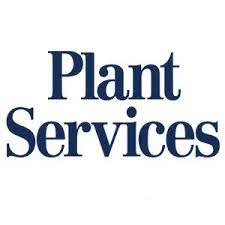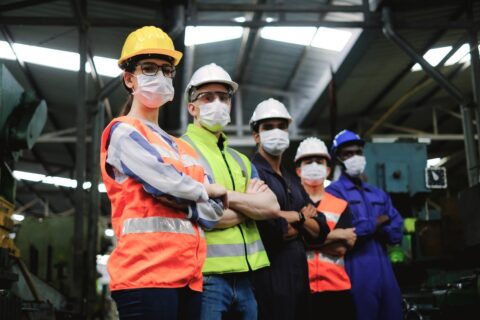Where the Maintenance & Reliability Industry is Headed in 2021
The COVID-19 pandemic has impacted nearly every industry imaginable. As leaders in the maintenance and reliability industry continue to navigate this “new normal,” we look toward the future. What does 2021 have in store?
One thing is for certain—the collaboration between humans and smart systems, which is in its infancy, is sure to accelerate in the coming year. This is bound to bring about several trends that manufacturers must be prepared to embrace if they hope to stay ahead of their competitors. Here’s a look at where we believe the maintenance and reliability industry is headed in 2021.
Emphasis on Employee Safety
Workplace safety has long been a priority for US-based manufacturers, but it has developed a new level of significance during the pandemic. On top of basic safety protocols that have been in place for decades, it’s now necessary to enforce social distancing, sanitization, careful facility monitoring, and contact tracing. These trends will be sticking around for as long as COVID-19 does and may continue for years thereafter.
Continued Growth of the Internet of Things
Since its inception, the Industrial Internet of Things (IIoT) has continued to evolve, its adaptability and innovation leading to nearly limitless applications for the maintenance and reliability industry. Many companies may begin or accelerate implementation of the IIoT in 2021 by implementing smart devices and embedded intelligence. This technology can help you make more informed, strategic decisions using real-time data. When utilized correctly, the outcomes may include:
- Reduced business costs
- Enhanced efficiency
- Improved safety
- Innovated production processes
Predictive Maintenance
IIoT-enabled devices make it possible for the field service arm of the maintenance and reliability industry to safely monitor equipment performance from a distance. This has become a critical component of productivity during the age of COVID-19.
Predictive analytics and maintenance are also beneficial on the manufacturing side, helping avoid costly breakdowns that can have a tremendous impact on your bottom line. IIoT technology automates the data collection process and makes it possible to conduct monitoring tests while the system is operating. This prevents the loss of production that would be caused by shutting the equipment down.
Virtual Reality and Augmented Reality
In addition to the IIoT, virtual reality (VR) and augmented reality (AR) are proving to be vital touchless service options. These assistive technologies existed before COVID-19, but many customers were reluctant to explore them.
Now, with the desire to reduce exposure risk, more customers are open to the idea of being guided through basic troubleshooting and repairs with VR- and AR-enabled devices. As a result, these technologies are a top trend in the maintenance and reliability industry going into 2021.
3D Printing
3D printers are essential for the cost-effective prototyping, testing, and troubleshooting of new products. They have also transformed the once-expensive and time-consuming process of tooling. Instead of hiring offshore companies and taking months to create the new molds, jigs, and fixtures necessary for mass production, manufacturers can now complete onsite tooling projects in a matter of days. If you haven’t invested in 3D printing technology yet, 2021 is the year to do so.
Reshoring
Even before COVID-19, many manufacturers were beginning to bring imported goods and materials back into domestic production. Reshoring became popular for numerous reasons:
- Rising offshore wages
- Lack of infrastructure in developing nations
- Increasing transportation costs
- The new ability to automate many processes that once required human intervention
- Supply chain risks due to possible product unavailability or delays
COVID-19 has only accelerated the reshoring trend. Our country has realized how detrimental it is to lack critical supplies produced domestically, so we can expect reshoring to be a leading trend heading into 2021.
COVID-19 Exit Strategy
Countless products and services have fluctuated in supply and demand during 2020. Whether 2021 heralds the demise of COVID-19 or not, it certainly is not too early to formulate an exit strategy. You must plan for how to return to post-pandemic supply and demand levels. Determine where to retool, rescale, or draw back to make your company’s pandemic recovery as smooth as possible.
Workforce Reevaluation
Many manufacturers that produce non-essential goods have had to scale back and reduce staff due to COVID-19. At the same time, essential goods manufacturers have added product lines and hired new workers to meet demand. Going into 2021, companies on both sides of the situation will need to reevaluate the current workforce and determine what changes must be made based on continuing shifts in demand.
If you are part of the maintenance and reliability industry looking to hire in 2021, you will likely have your sights set on highly data-focused employees. This type of talent can be hard to come by because of the current shortage of tech-savvy job applicants.
Fortunately, Progressive Reliability can help you select top-tier candidates to fill your toughest positions. We find the “work behind the skill” and the “untrainable traits” that make the best employees. Let us tailor a workforce solution designed to provide empowerment, increase productivity, and reduce turnover rates. To work with Progressive Reliability for all your hiring needs in 2021, please contact us today.
““

